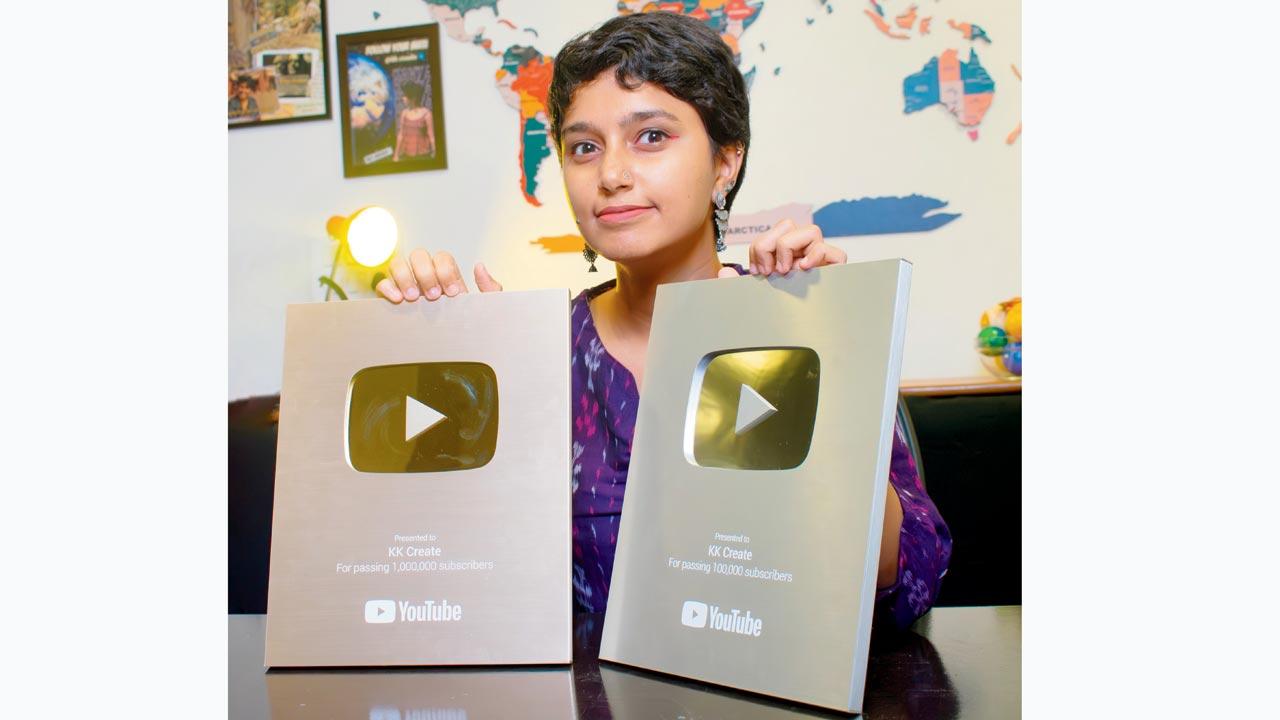Kavya Karnatac is the woman of the moment. Her hugely popular video reports on Deonar’s dumping ground in April are the ideal example how content and journalism have become enmeshed today

A still from Karnatac’s Deonar Dump coverage of health issues the residents around area are facing
The meaning of “patrakar” has been seeing an evolution with the advent of social media and technology and 27-year-old Kavya Karnatac epitomises this revolution.
It was when the Lady Shri Ram College graduate moved to Mumnai to pursue her Masters in Media and Cultural Studies at the Tata Institute of Social Sciences (TISS) in 2018, that she gained insight into Deonar, home to one of the biggest garbage dumps in Asia. Now residing in Delhi, her time in Mumbai provides crucial context for her recent video series on the health crisis plaguing the residents of Deonar. The first video in the series — with its shocking glimpses of the 12-storey mountain of garbage and sewers gushing past the houses — has got over 10 lakh views since April.
It’s been a challenging journey upto this point for Karnatac, who started her company kkcreate two-and-a-half-years ago, pretty much on her own. “At the time, I was working for another company as a video producer and started kkcreate so that I could keep doing something [on the side] for something that is my own. By the time I quit and got into it full time, I had saved up three months’ salary and had no clue where I would head. Ek Rs 16,000 ka phone aur 40 rupaiya ka green screen, but I knew I would get somewhere [I had only a Rs 16,000 phone and R40 cloth that served as my green screen],” she tells us over a phone call from Delhi.
 Kavya Karnatac’s YouTube channel has gone up to 3.2 million subscribers
Kavya Karnatac’s YouTube channel has gone up to 3.2 million subscribers
As of today kkcreate has 27 lakh followers (@kk.create) on Instagram and 32 lakh subscribers on YouTube (@kk.create.original). “To be honest I never thought we’d have such exceptional growth so fast. Initially, I was making videos on geography and still consider myself a content creator,” she adds.
Karnatac now heads an 18-member team, including her partner Varun Pandey, to whom she credits her success, her teacher mother, and BSF Jawan father. “Varun left his job, joined my efforts, and brought a friend with him too,” she says.
Karnatac’s aim is to eventually cover all the states in the country. She talks about the difficulties she and her team faced during their reportage. “We covered a town called Jadugoda, in Jharkhand, where India dumps its nuclear waste, and every other person suffers from some form of disability. We were accused of being anti-national for that coverage. But at the same time, I know there are people who want to see real, on-ground stories. In fact, it came as a pleasant surprise to us that many of our viewers are donating to us and affiliated NGOs as well,” she says.
The cost of producing each video, not counting salaries, runs into at least Rs 1.5 lakh. To cover production costs, Karnatac has been collaborating with Indian educational tech platforms like those that make Indian map puzzles, or teach mathematics. “We don’t collaborate with those we have an ethical problem with. We have to be conscientious about this because at the end of the day, in our videos we are talking about important social issues,” she adds.
Going forward, Karnatac says they want to concentrate on creating creators. “It’s vital to hand over the mic to others to tell their stories as well,” she says. “After all, no one can tell their story like they can,” she says at the end of our call.
Well, Ms Karnatac, we hope your platform sees more Kavyas speak truth to power.
 Subscribe today by clicking the link and stay updated with the latest news!" Click here!
Subscribe today by clicking the link and stay updated with the latest news!" Click here!










